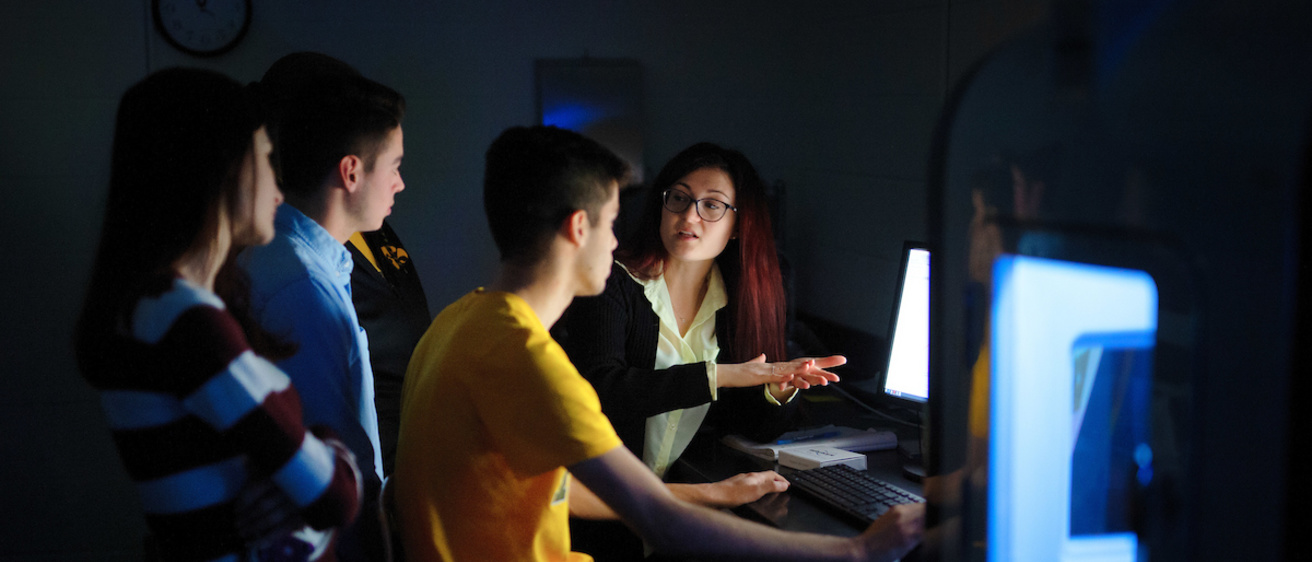Bio-inspired Materials
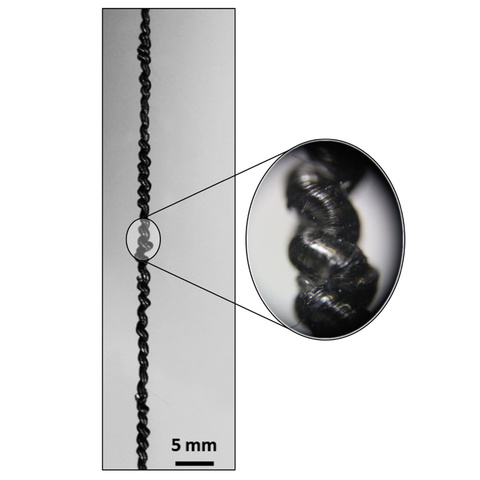
|
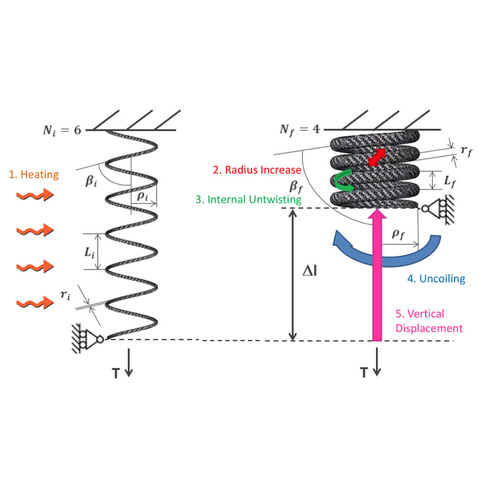
|
Nature represents an invaluable source of inspiration for the development of new engineering materials systems with smart and adaptive functionalities.
The pursuit of artificial muscles, able to emulate the functions of mammalian skeletal muscles (such as high power/weight ratio, high stroke, flexibility, and scalability) represents a great example of biomimicry.
Twisted and coiled fibers have been recently proposed as a new class of artificial muscles. These lightweight muscles can substitute the traditional and heavy electromagnetic actuators in applications where low weight, fine motion and high contractile work are required.
Our group recently developed a new type of twisted and coiled artificial muscles from carbon fibers and silicone rubber. These novel muscles can be actuated by heating, joule heating, or chemical swelling, lift up to 12600 times their own weight, support up to 60 MPa of mechanical stress, provide tensile strokes up to 60%, and a specific work up to 758 J kg−1 (the latter is more than 18 times higher than that of natural muscles).
We also demonstrated that they need a very small input voltage to be actuated (e.g., 0.172 V/cm), and developed a theoretical model to explain their actuation mechanism. Our group is currently working on the development of orthotic, prosthetic, and human-assistive robotic devices based on carbon fiber artificial muscles.
Self-morphing smart skin inspired by cephalopods
The skin of the cephalopod is a 3D display, where the papillae muscles control the protrusion of each voxel by several millimeters out of the skin plane, create hierarchical textures, and collectively change the overall skin pattern in a fraction of a second. We developed a material system capable of mimicking this response using electromechanical actuation of twisted spiral artificial muscles (TSAMs). TSAMs leverage the mechanics of their twisted geometry to extend out of plane by 8 mm, corresponding to 2000% strain using a voltage of only 0.02 V mm−1. They are made of polymer fibers wrapped with a helical metal wire. These actuators are assembled on a stretchable skin with the required flexible electrical connections to form an array of digital texture voxels (DTVs). The DTV array produces arbitrary 3D surface patterns on‐demand, and provides opportunities to control hydrodynamic drag, camouflage, and haptic displays.
This research project is currently funded by the Office of Naval Research (ONR).
Smart Materials
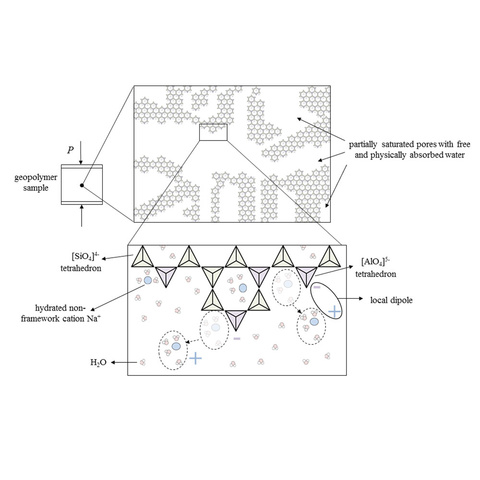
|
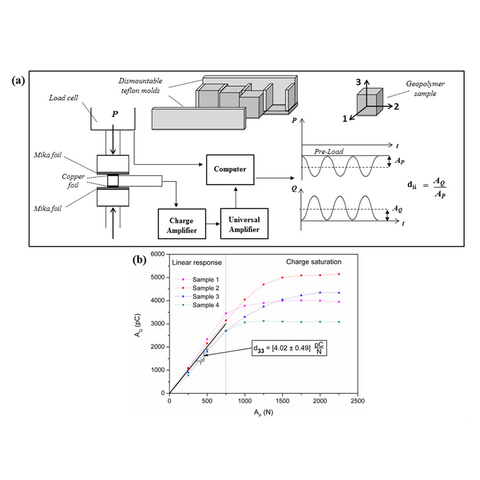
|
In the last decades, a great variety of smart materials, ranging from shape memory and piezoelectric, to self-healing and color-changing materials, has been proposed for a wide range of applications in the military, aerospace, medical, construction, transport, leisure and domestic areas.
Our research group aims to design, fabricate, simulate, and characterize smart materials and systems. In the field of piezoelectric materials, we recently demonstrated that the piezoelectric effect of materials is not always related to the presence of a non-centrosymmetric crystalline structures.
We discovered the presence of a direct piezoelectric effect in metakaolin based geopolymeric mortars and showed that it is due to a complex interplay that involves not-framework cations, framework and water contained in the material pores.
An anisotropic behavior of the effect was observed and the measured charge coefficient in the predominant direction was found to lie in the range (4 ÷ 40) pC/N, depending on the water content in geopolymers.
Multifunctional Nanocomposites
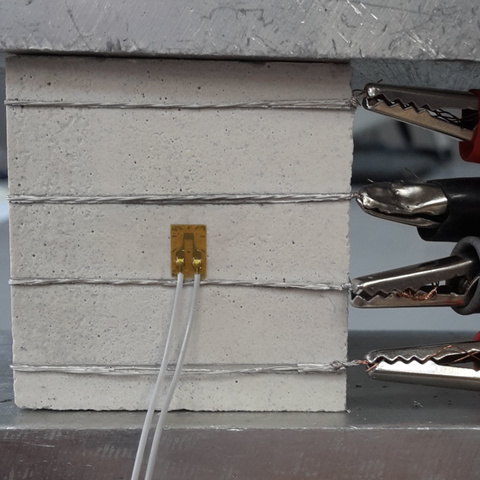
|

|
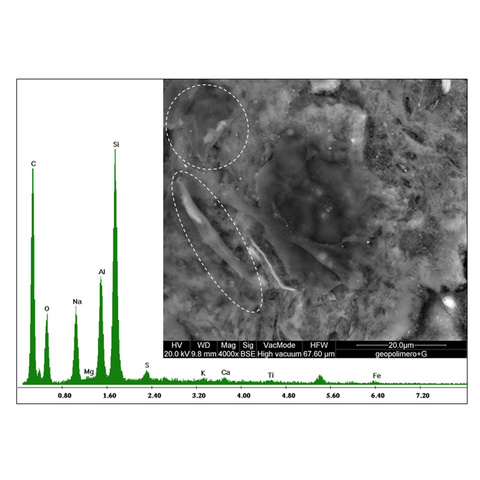
|
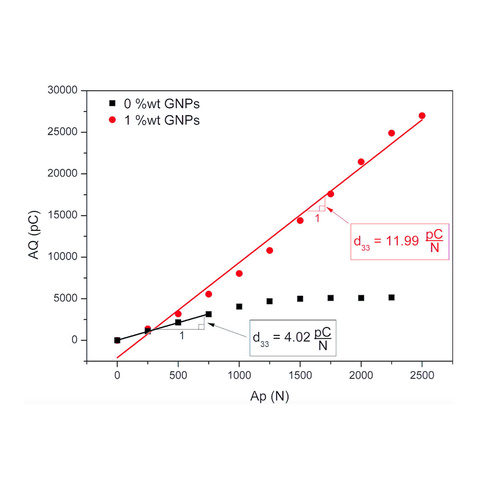
|
Graphene, single-atom thick sheet of sp2 hybridized carbon atoms, is the thinnest, stiffest, and strongest material known to date.
Known also as “wonder material”, graphene has excellent electrical properties and it is a perfect filler for the production of nanocomposites due to its high surface/volume ratio.
We developed multifunctional nanomaterials by embedding graphene nanoplatelets into a geopolymeric mortar matrix. We demonstrated that the presence of graphene leads to a significant improvement of both mechanical and electromechanical properties of geopolymers.
In particular, increments of 198% and 20% were measured for the piezoresistive and piezoelectric coefficient, respectively.
The high piezoresistive and piezoelectric activity make these multifunctional nanocomposites suitable for innovative applications such as self-monitoring of civil infrastructures or energy harvesting devices.
Multiscale Characterization of Engineering Materials
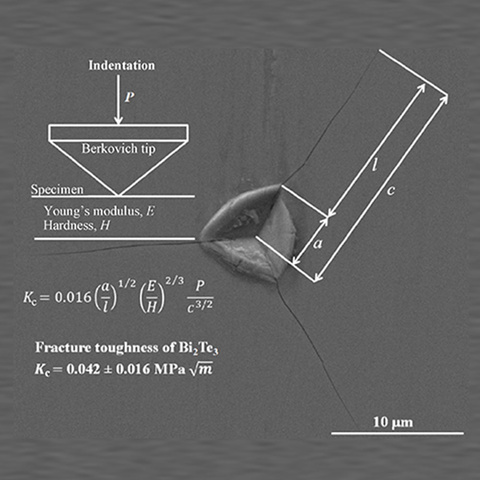
|
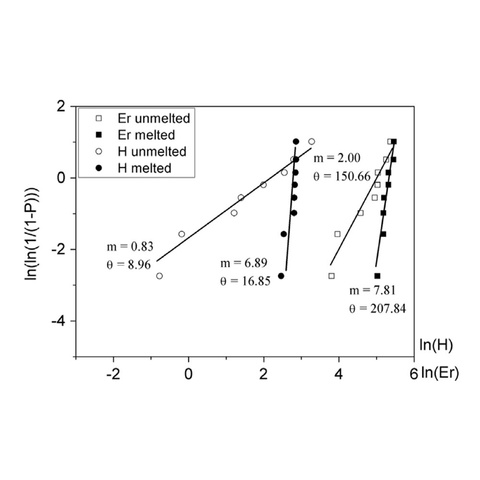
|
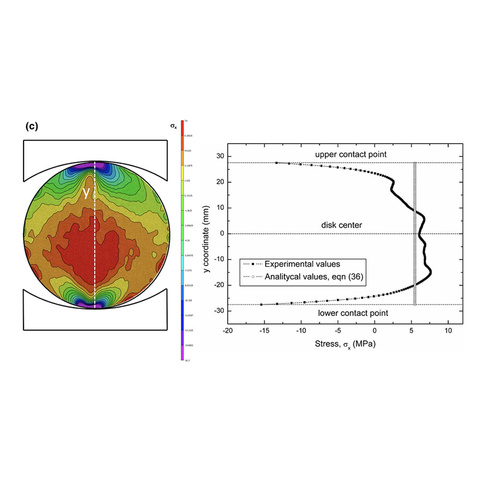
|
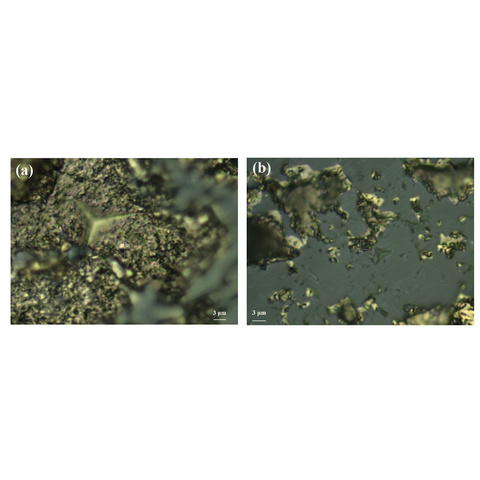
|
Engineering materials show different mechanical properties at different length scales.
Our research lab is specialized in the mechanical characterization of a wide range of materials (e.g., metals, polymers, ceramics, composites) from the nano- and micro-scale to the macro-scale.
Depth-sensing indentation is a powerful tool for the mechanical characterization at low length scales. Thanks to the real-time monitoring of the tip force and penetration depth, several mechanical properties can be measured, such as stiffness, hardness, fracture toughness.
The oscillation of the indenter tip at high frequencies allows also to measure viscoelastic and fatigue properties, as well as perform Scanning Probe Microscopy.
Besides the characterization at the nano- and micro-scale, we also characterize materials at the macro-scale using conventional mechanical testing machines and optical techniques such as DIC (Digital Image Correlation).
